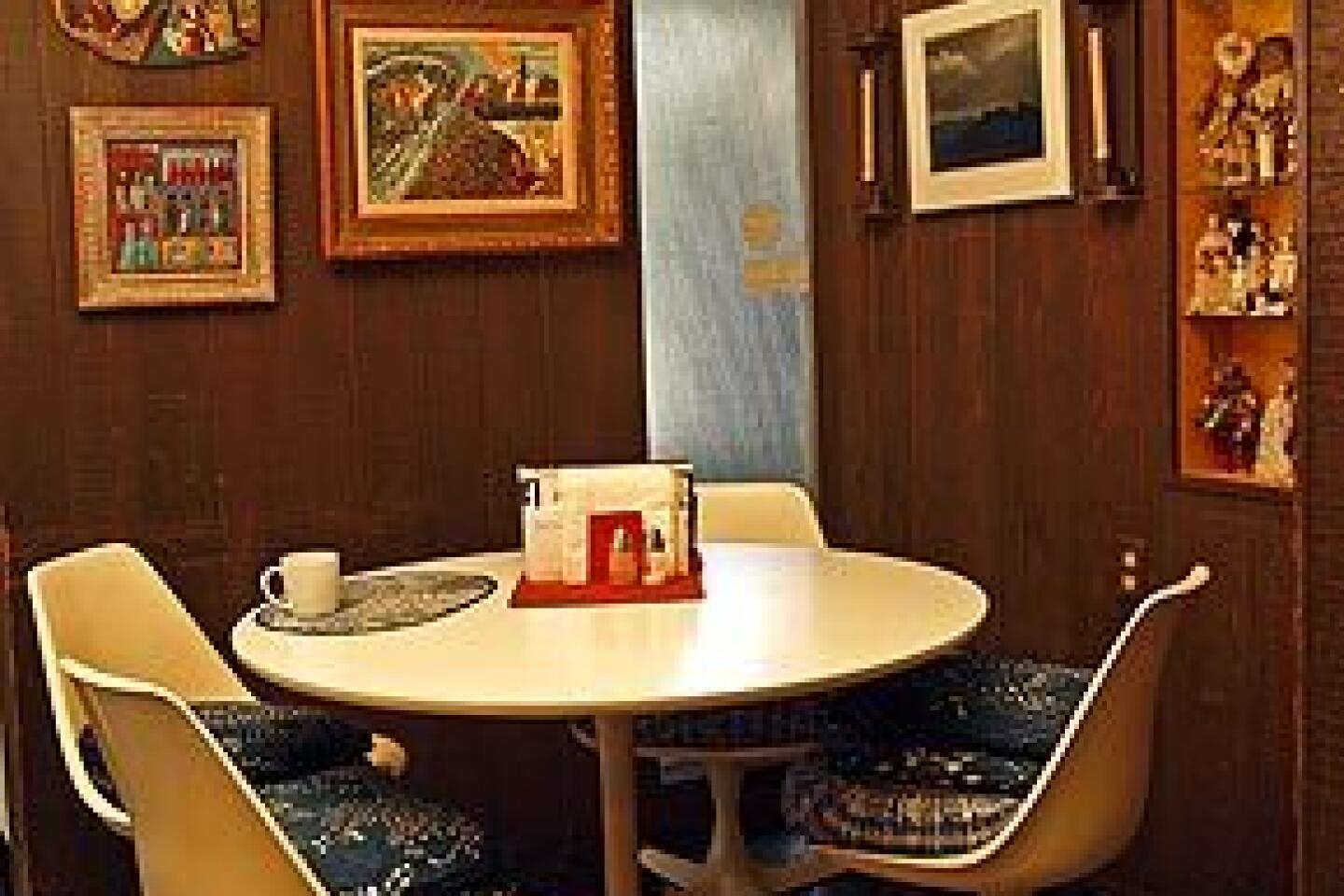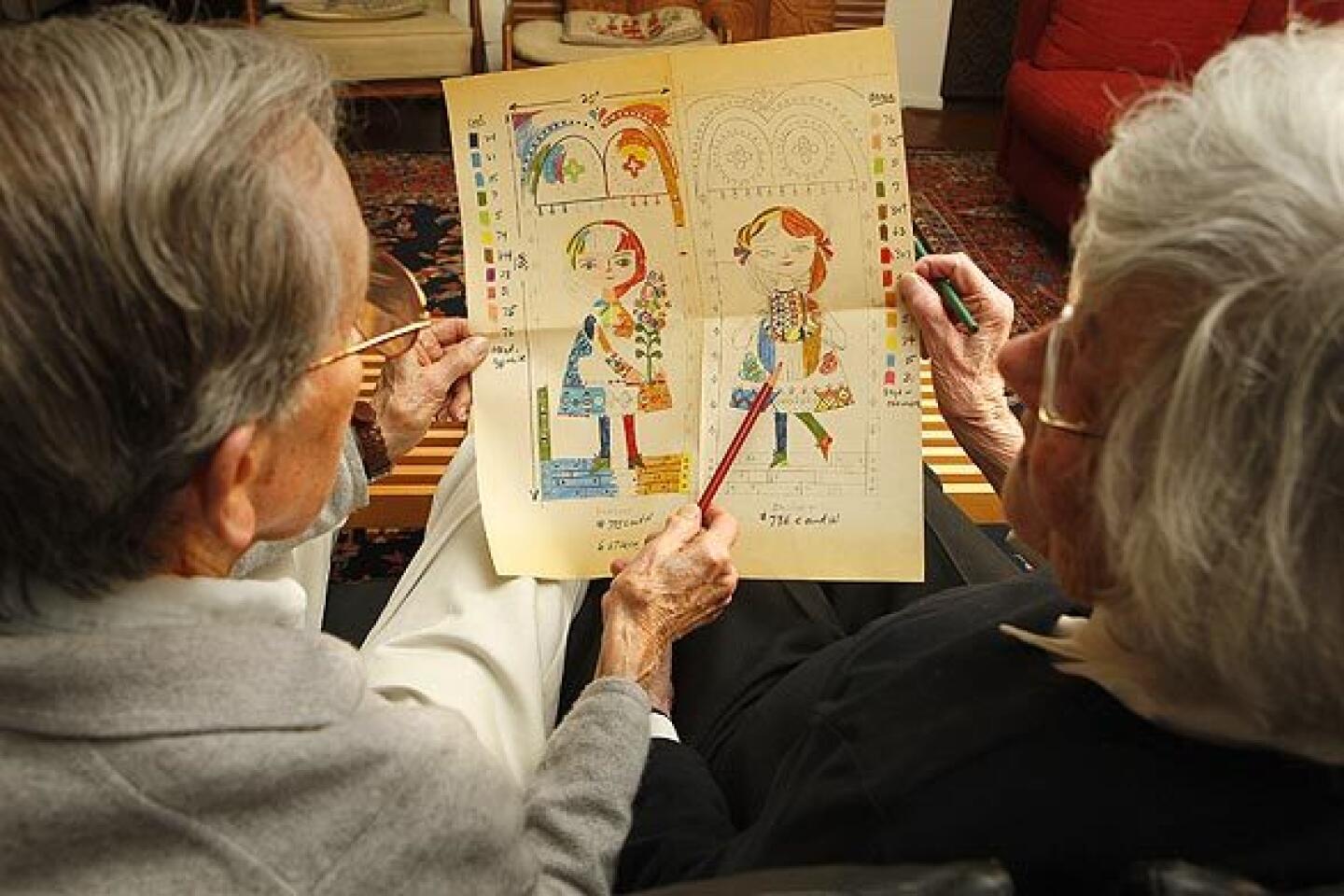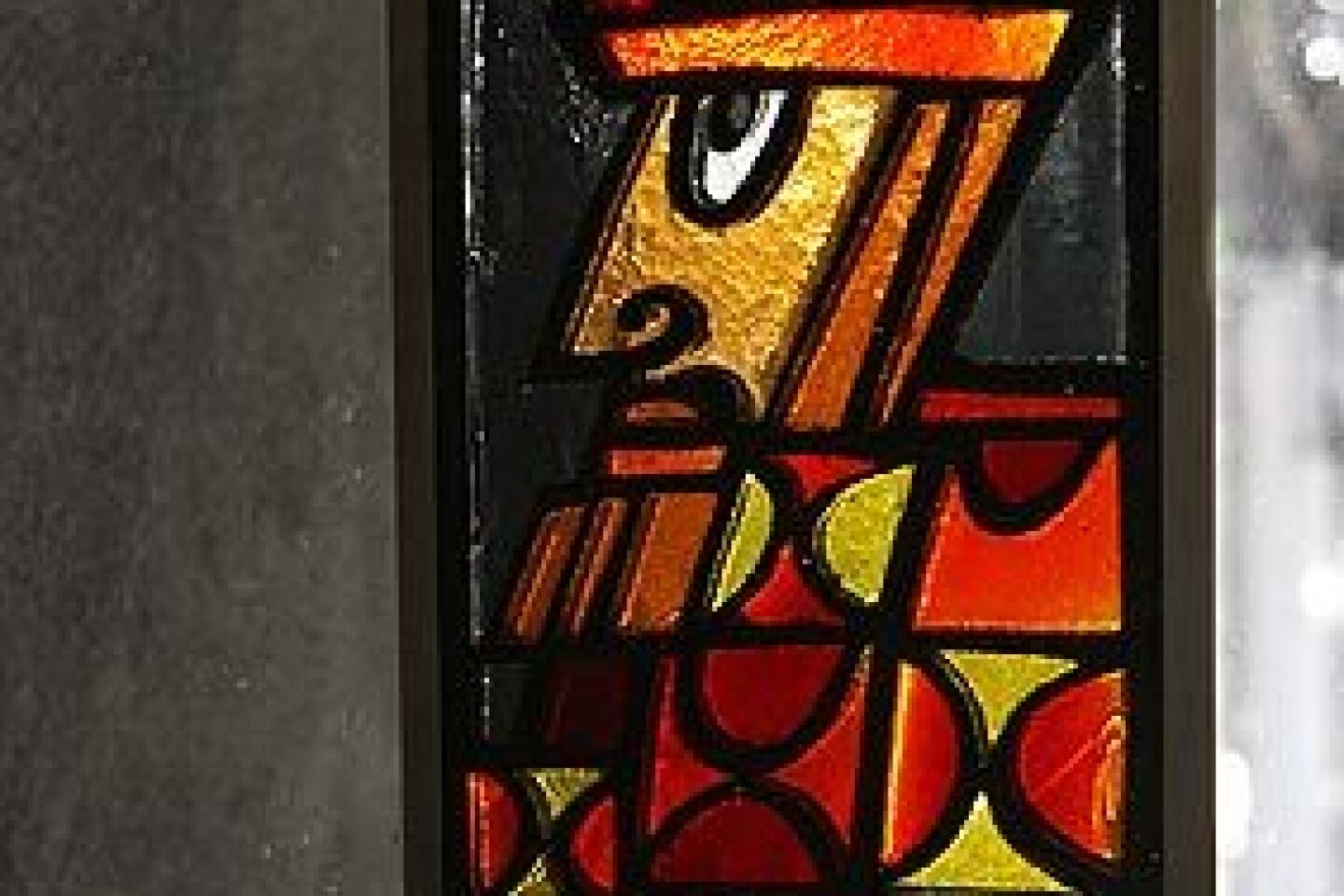Evelyn Ackerman dies at 88; California modernism artist, designer
- Share via
Evelyn Ackerman, a California artist and designer known for her highly regarded work across a range of media, including mosaics, tapestries and wood carvings, and for her creative collaboration of more than six decades with her husband, artist Jerome Ackerman, has died. She was 88.
Ackerman died Wednesday at her home in Culver City of complications of old age, said her daughter, Laura Ackerman-Shaw.
Originally from Detroit, Evelyn Ackerman was a prolific designer who, together with her husband, became part of the mid-century movement known as California modernism. Infused with a spirit of postwar optimism, her designs were warm and often whimsical, inspired by folk art and featuring animals, flowers, children and mythical figures.
So popular were Ackerman’s pieces that one, a brightly colored wall hanging titled “The Garden,” appears in the background of a 1963 Playboy magazine cartoon.
“My dad jokes that you know you’ve really made it if your work gets into Playboy,” said Ackerman-Shaw, who said the original, hand-hooked tapestry hung in her childhood bedroom.
Ackerman’s designs also appeared in many museum exhibitions. A 40-piece series of her intricate cloisonne enamels is part of the permanent collection at the Smithsonian American Art Museum.
Ackerman’s work “is a combination of incredible craft, fabulous design and a sweetness that I think is missing from a lot of design today,” said New York-based designer Jonathan Adler, who collects the artist’s pieces and cites her as an inspiration.
“She showed a tremendous confidence in her ability to be taken seriously as a designer and to be playful at the same time. She was really a singular talent.”
Ackerman was unusual in her ability to design across a range of materials and to create works of vastly different scale, from enamel miniatures to large architectural mosaics, said Dale Carolyn Gluckman, who co-curated a major 2009 retrospective, “Masters of Mid-Century California Modernism: Evelyn and Jerome Ackerman,” for San Diego’s Mingei International Museum.
“She worked in ceramic, metal, fiber and wood and could translate her work into different media in a way that was really quite extraordinary,” said Gluckman, a textiles expert and former curator at the L.A. County Museum of Art. “And she had an incredible eye for line, color and form.”
Evelyn Lipton was born in Detroit on Jan. 12, 1924, and grew up in that city. She received bachelor’s and master’s degrees in fine arts from what is now Wayne State University, and worked in an interior design studio after completing her degrees.
In 1948, she married Jerome Ackerman, a fellow art student she had met on campus before he left school to join the Army Air Forces and serve in World War II. When he returned, a friend urged Ackerman to look Lipton up and the two soon began dating, marrying a few months later.
In 1949, the Ackermans were inspired to consider careers in modern design after they visited an exhibition at a Detroit museum that featured innovative contemporary designers, including Charles and Ray Eames.
“It really opened our eyes and set the ball rolling,” Jerome Ackerman, now 92, said in an interview last week. “As we were walking out, I said, ‘You know, that’s remarkable, what we’ve just seen. Look at what they’ve done and there’s no reason we can’t do it too.’ ”
Drawn by the West Coast’s weather and burgeoning artistic community, they moved to Los Angeles in 1952 and set up their first studio, Jenev, a combination of their first names, which was followed by ERA Industries in 1958. At first, to make ends meet, Evelyn worked for $1 an hour answering fan mail for comedian Red Skelton and both designed novelty kitchen items.
Their early output focused mainly on Jerome Ackerman’s pottery but by the mid-1950s, Evelyn began to blossom as an artist and was soon the team’s primary designer, with her husband taking charge of production and marketing. After they realized she could no longer make all the pieces herself, they also began limited production of the still-handcrafted items overseas, using artisans in Mexico, Japan and elsewhere.
“One of our goals was to be affordable,” Evelyn Ackerman said in a 2009 interview for a Times profile. “Not having a lot of money was the position we were in most of our young lives, so it is what we strove to do for others.”
Their designs were sold at major department stores, as well as contemporary design outlets. They were featured in home and design magazines and were included in each of a renowned series of California Design shows from 1954 through 1976 at the former Pasadena Art Museum.
Bill Stern, founder of the Museum of California Design in Los Angeles, described Evelyn Ackerman’s work as a sensual take on mid-century modernism. “She brought an innate sense of color and line to her work and created very, very appealing designs,” he said.
In recent years, as her husband returned to his potter’s wheel, Evelyn Ackerman also became an expert on antique dolls and dollhouses. She wrote five books on the subject, including her own patterns for doll costumes.
In addition to her husband of 64 years, Ackerman’s survivors include her daughter Laura and a grandson, Aaron.
A memorial service is scheduled for 1 p.m. Sunday at Hillside Memorial Park, 6001 W. Centinela Ave., Los Angeles.
More to Read
Start your day right
Sign up for Essential California for the L.A. Times biggest news, features and recommendations in your inbox six days a week.
You may occasionally receive promotional content from the Los Angeles Times.




















